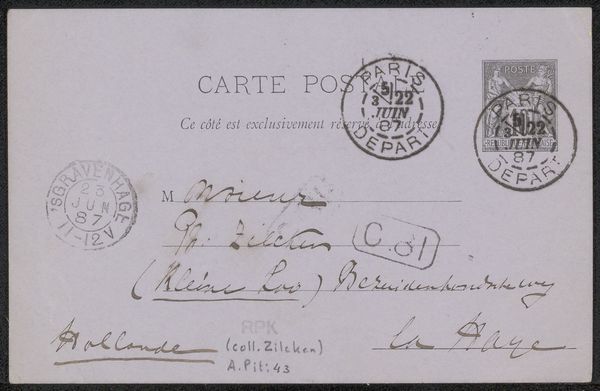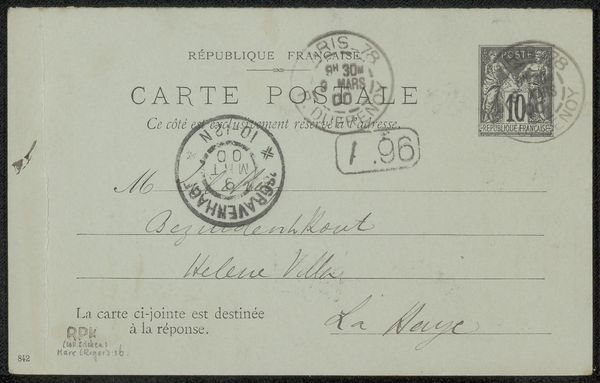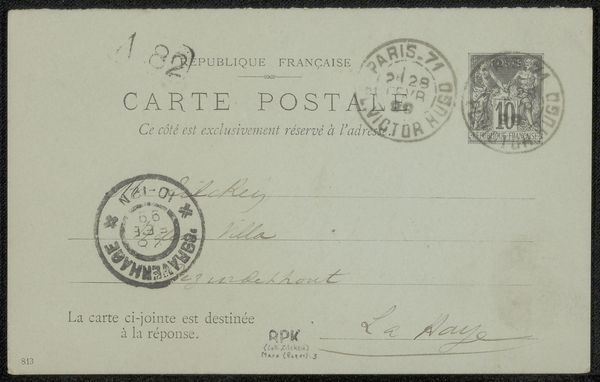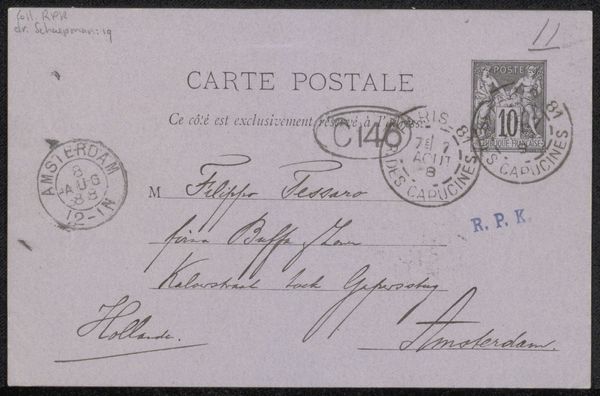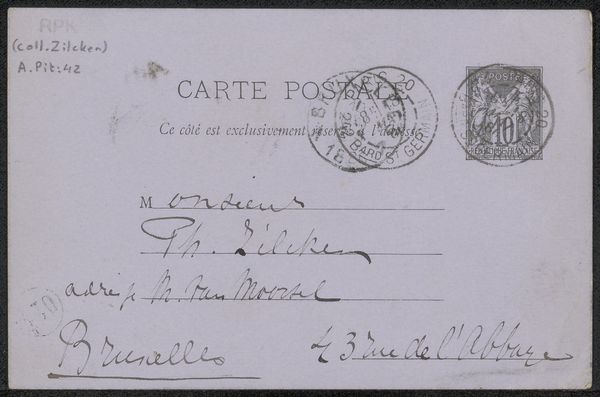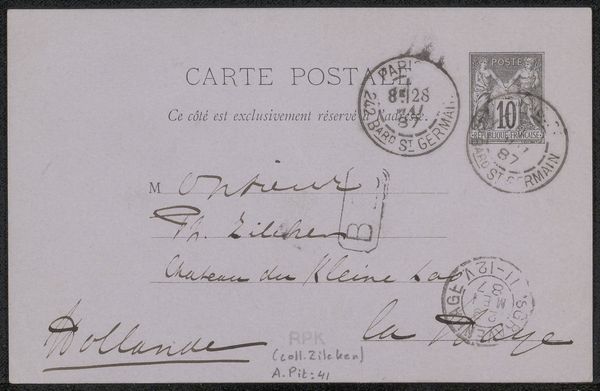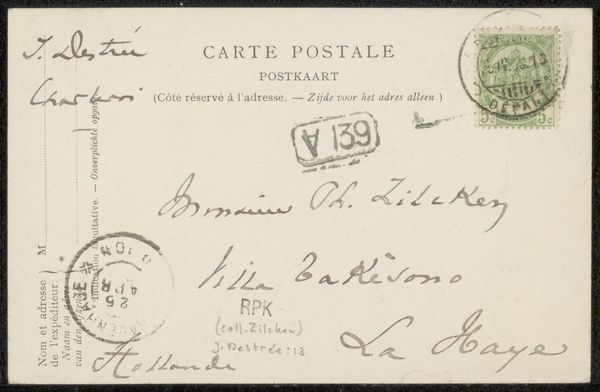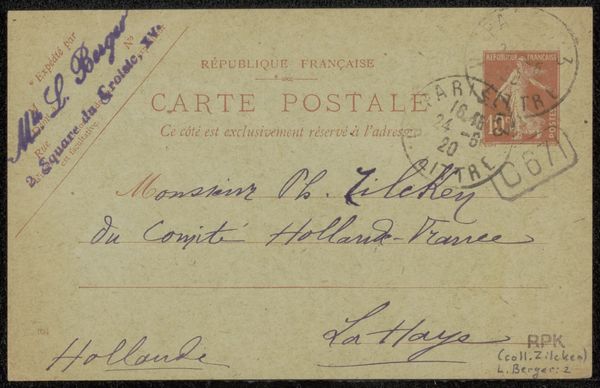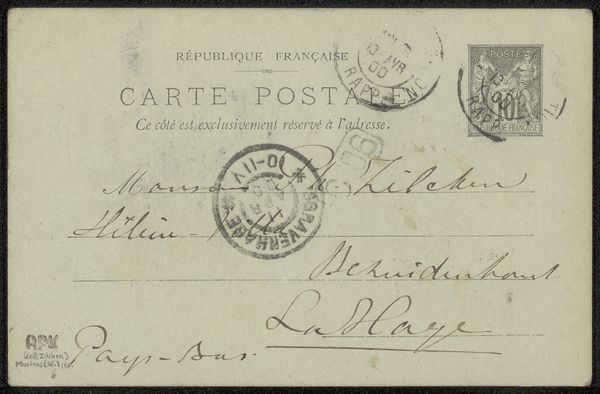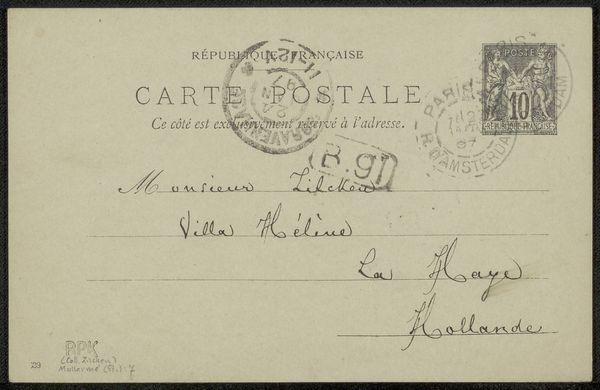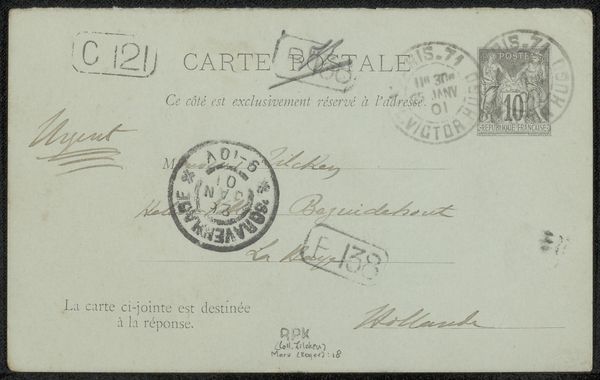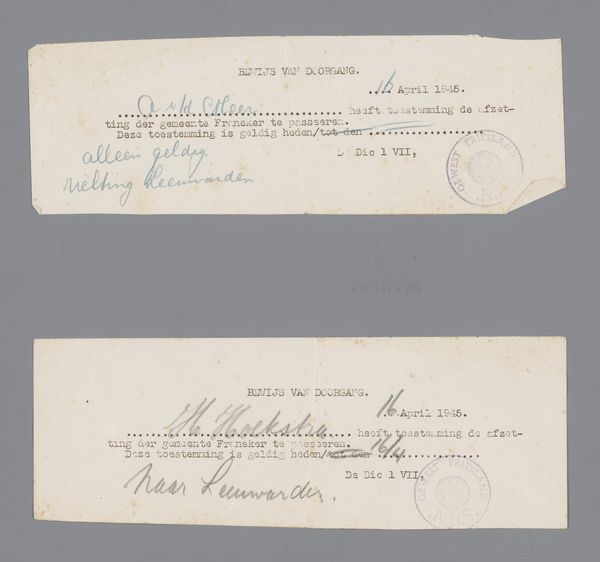
drawing, print, paper, ink
#
drawing
#
comic strip sketch
#
thin stroke sketch
# print
#
old engraving style
#
hand drawn type
#
paper
#
personal sketchbook
#
ink
#
idea generation sketch
#
sketchwork
#
sketchbook drawing
#
sketchbook art
#
calligraphy
#
initial sketch
Copyright: Rijks Museum: Open Domain
Curator: Before us we have "Briefkaart aan Philip Zilcken," possibly from 1888. It's a drawing printed on paper, created with ink. Currently, it resides in the Rijksmuseum collection. Editor: It feels so personal, a little window into a different time. I'm struck by how functional it is; you see the marks of postage, address…it grounds the artist somehow. Curator: Absolutely. These marks of postage, specifically the circular stamp from Paris and the stamp depicting what appears to be allegorical figures, provide direct context of postal networks available at the time of making. The drawing acts more as the labor involved in communicating, in reaching someone, the physical process. Editor: That French stamp depicting figures—maybe representing Liberty and Equality—sits juxtaposed with the hand-written “Hollande”, revealing something of the national and perhaps personal identity. Do you think the figures on the French stamp indicate the value of trade at that time? What symbols or iconographies of nation and place are present? Curator: Perhaps! Notice how the postcard itself signifies shifting values and modes of mass-production—but is overlaid with an individual's calligraphic address; it signifies the rise of new visual cultures. The hand-written script reminds us of a very personalized and intimate connection despite the medium’s potential to diminish those elements. Editor: Good point. It does seem so contradictory, this tension between mass communication and the intimate script. Thinking of Zilcken, the recipient, what can this single image suggest to us of the type of exchange it represented between these two individuals at the end of the 19th century? What world did it inhabit, with these hand-drawn, hand-sent missives? Curator: Indeed! The labor involved in creating something unique—through an inked calligraphic sketch—but also highlights the intersection of postal infrastructure with individuals navigating the social circles and creative communities of their time. The stamp acts almost like a cog in this machinery, which facilitated their social relationship. Editor: I agree. Thinking about the materiality, labor and function that the object implies alongside its historical context deepens the visual encounter and enriches our understanding beyond pure aesthetics, as well as reminds us of the ever shifting means and networks of the 19th-century European avant-garde! Curator: A most fruitful examination.
Comments
No comments
Be the first to comment and join the conversation on the ultimate creative platform.
